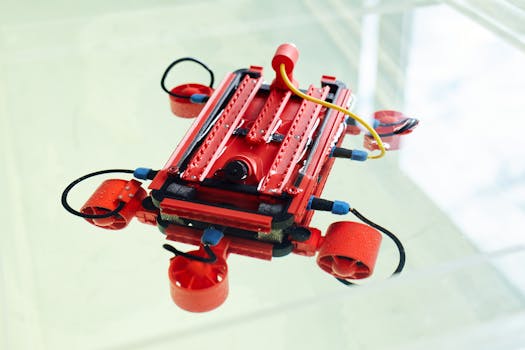Revolutionizing Commercial Construction: The Impact of Robotics, 3D Printing, and Autonomous Vehicles

The Robotics Revolution: Transforming Commercial Construction
The Robotics Revolution: Transforming Commercial Construction
The Dawn of a Technological Revolution in Commercial Construction
The commercial construction industry stands at the precipice of a technological revolution. This transformation extends beyond the introduction of new materials or innovative architectural designs. The true game-changer is the advent of robotics. With the rise of autonomous vehicles and 3D printing, robots are already here, revolutionizing the way we build.
A Collaborative Future: Robots and Humans on Construction Sites
Visualize a construction site where robots and humans work in harmony, each leveraging their unique strengths. Humans contribute their creativity, problem-solving skills, and decision-making abilities, while robots handle the heavy lifting, repetitive tasks, and precision work. This isn't a scene from a sci-fi movie; it's the reality of today's construction industry.
3D Printing: A Dramatic Advance in Construction Robotics
One of the most striking advancements in construction robotics is the use of 3D printing. Imagine a gargantuan robot arm, guided by laser-precise software, extruding concrete layer by layer to construct a building. This may sound like a scene from a futuristic novel, but it's happening today. Companies like Apis Cor and COBOD are trailblazers, using 3D printing robots to construct buildings faster, cheaper, and with less waste than traditional methods.
Autonomous Vehicles: The New Workhorses of Construction Industry
The robotics revolution isn't confined to 3D printing. Autonomous vehicles are leaving their mark on the construction industry as well. These self-driving machines, guided by GPS and equipped with advanced sensors, can perform tasks like digging, grading, and hauling with remarkable precision and efficiency. They can operate around the clock, in all types of weather, without the need for breaks. Industry giants like Komatsu and Caterpillar are already deploying autonomous vehicles on construction sites globally.
Robots: The New Safety Officers on Construction Sites
Robots are also stepping in to handle some of the more dangerous tasks in construction. High-rise window cleaning, traditionally a risky job, is now handled by robots that can scale skyscrapers, cleaning windows with perfect precision while keeping human workers safely on the ground. Similarly, demolition robots undertake hazardous tasks like breaking down walls and removing debris, reducing the risk of injury to human workers.
Addressing Industry Challenges through Robotics
These advances in construction robotics are not just about efficiency and safety. They also address some of the industry's most pressing challenges. The construction industry is grappling with a labor shortage, with fewer young people entering the field and an aging workforce. Robots can help bridge this gap, taking on tasks that are unattractive or difficult to fill for human workers.
Moreover, as the urgency of climate change intensifies, the construction industry is under pressure to reduce its environmental impact. Robotics can play a pivotal role in this area too. By improving efficiency, reducing waste, and enabling new, more sustainable construction methods, robots can help the industry become more eco-friendly.
The Challenges and Potential of the Robotics Revolution
The robotics revolution in commercial construction is not without its challenges. Questions about job displacement, the need for new skills, and the regulatory landscape are all valid concerns. However, with the right approach, these challenges can be managed. The potential benefits in terms of efficiency, safety, sustainability, and addressing labor shortages are enormous.
Embracing the Robotics Revolution in Construction
In conclusion, robotics is more than just a new tool in commercial construction. It's a transformative force that's reshaping the industry. For those willing to embrace this revolution, the future of construction looks incredibly promising. So, let's welcome our new robot colleagues and prepare for a future where humans and robots construct together, side by side.



